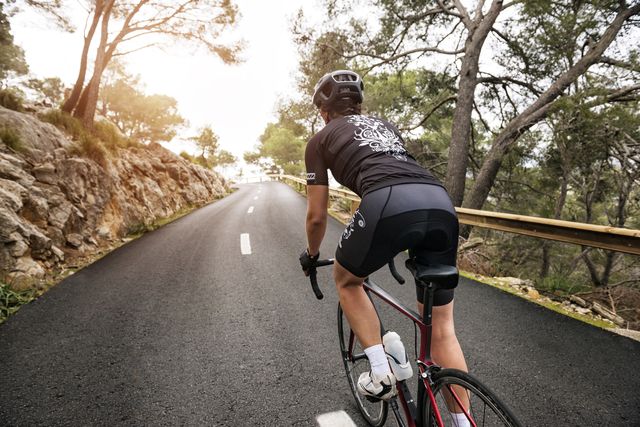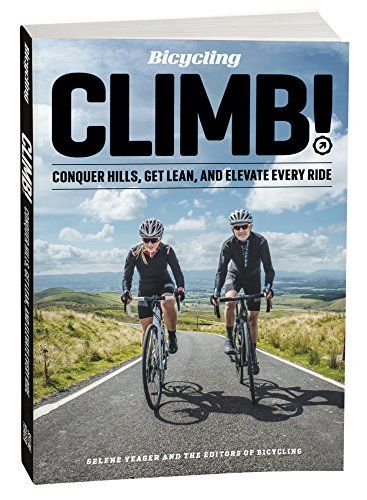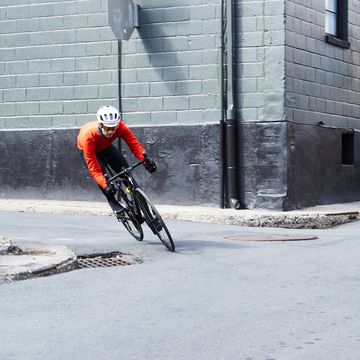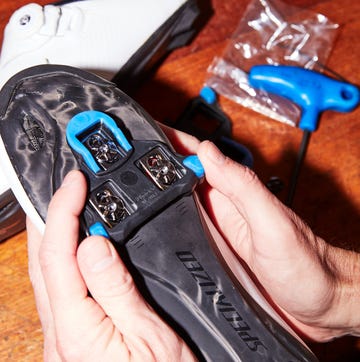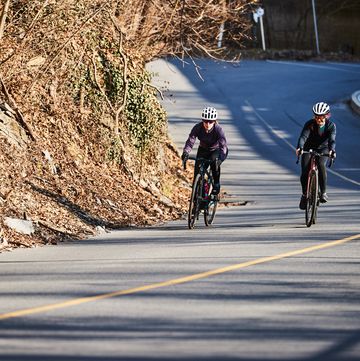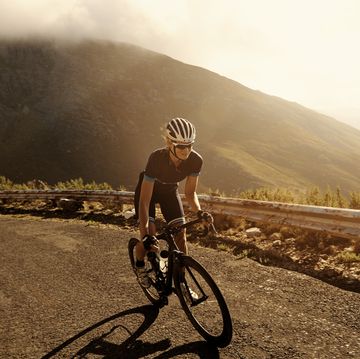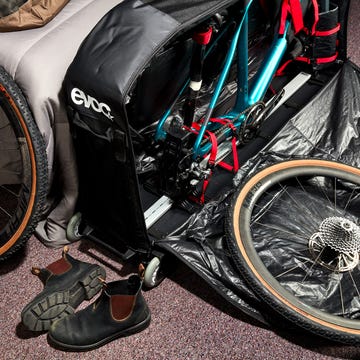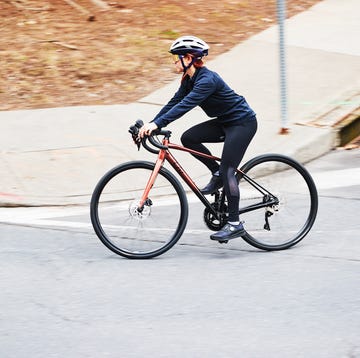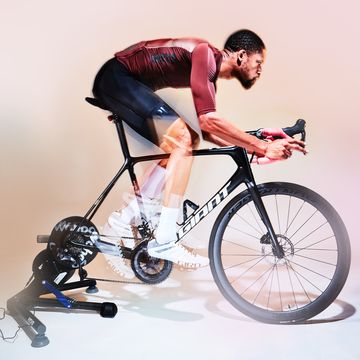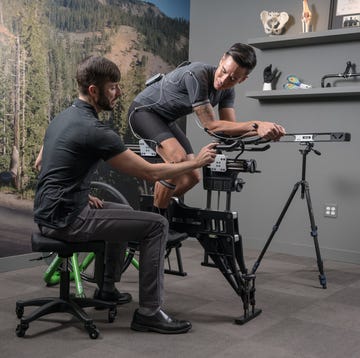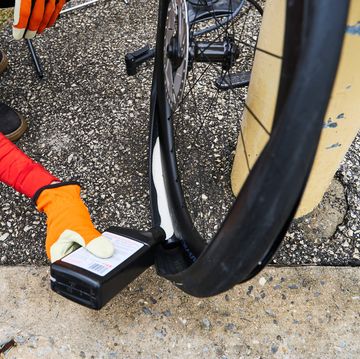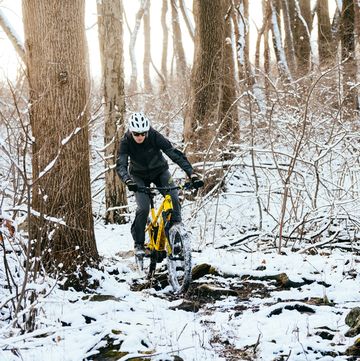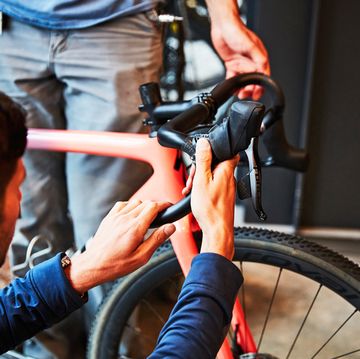The following is excerpted from Climb! by Selene Yeager—your guide to train for, conquer, and ultimately fall in love with hills.
Though some riders learn to love (or always have loved) climbs, for riders like TJ Klausutis, a towering 6’3” 220 pound man from the pancake flat panhandle of Florida, the relationship is decidedly more of a love-hate thing, frenemies with benefits if you will.
“I do not love climbing!” says Klausutis, who made a Leadville belt buckle his goal during his journey to lose more than 150 pounds. “I am proud that I have the ability to do it. And it’s amazing to look back after making a climb and realizing I can do this now. It is also really fun to surprise people. I have heard more cheers for the big guy! So it is not love, but it’s a hell of a sense of accomplishment, which transcends the bike.”
Which is exactly the point. Of all the things we do on our wheels, nothing rewards us on and off the bike more richly than conquering climbs.
It’s like the old saying that a high tide lifts all boats. Climbing not only made TJ leaner, stronger, smarter, more skilled, and mentally tougher on the bike, but also gave him the confidence to take on new challenges like the Dirty Kanza 200 gravel race and keep pushing himself…and collecting those shiny Leadville buckles.
When you peer inside the adaptations that happen inside every cell of your body when you tackle ascents, it’s clear why climbing can be so transformative. Whether you’re a large flatlander like TJ or a natural mountain goat or really anything in between, as the road tilts up, your body undergoes a cascade of metabolic reactions that may kind of hurt in the moment, but are oh so good for you long term. Hill climbs are mother nature’s “leg day,” so you build lower body muscle; your heart works harder and gets stronger; you raise your lactate threshold so you can ride faster longer. Heck, it’s so good for building total body strength that racers like multiple time World Champion mountain bike racer Rebecca Rusch, who once rode her bike up Mount Kilimanjaro, the highest peak in Africa (which kisses the sky at 19,341 feet), use uphill efforts as part of their core strengthening routine.
Hills also make you happier. Longer, sustained efforts trigger the release of mood-lifting chemicals like endorphins and cannabinoids, which, as the name suggests, are in the same family of chemicals that give pot smokers their high, kick in. Research also shows that regular efforts in the lactate threshold range, which incidentally is where you climb, may help ward off mood disorders like depression.
Research also shows all that the fresh air, sunshine, solitud,e and sweeping vistas that you soak in as you make your way up and over hills and mountains provide their own unique benefits.
RELATED: Want to fly up hills? Climb! gives you the workouts and mental strategies to conquer your nearest peak, Polka Dot jersey not included.
For one, natural light is a known mood lifter. Just 15 minutes of sunlight a day not only helps you make the vitamin D you need for strong muscles and bones, but it also reduces anxiety and depression. As you climb away from the hectic, often cluttered, urban and suburban landscapes where many of us live and work in, your mind gets a reprieve from the constant, nearly numbing stimulation that can cause what scientists call cognitive fatigue. You literally clear your mind as you climb, which is why some of your best ideas—like Einstein’s—often come while you’re on your bike.
And even if you never cook up your own theory of relativity, you’ll pick up a slew of life lessons on your way to the top, such as these gleaned from a handful of avid hill climbers.
Hills make you mindful. “Riders often feel isolated and in their own heads up a long climb. They’ll think, ‘I have four more miles. How can I possibly do this for four more miles?’ Don’t even think about that. Breathe in and breathe out, counting your breaths to quiet your mind. Then keep your mind in the moment. What do you see around you? Check out the views. Note all the little things along the way. You can always keep pedaling in that moment. It’s only when you look too far ahead that you start to shut yourself down. The hill won’t last forever, but the rewards of reaching the top will. That confidence transcends cycling, as does the ability to simply focus on the task at hand at any given moment rather than being buried by the larger job you’re trying to accomplish.”—Ian Dudley-Marling, 30, coach with Bell Lap Coaching in western Massachusetts
It’s okay to be uncomfortable. “Being uncomfortable is not the end of the world. Even those riders at the front of the climb are uncomfortable. Everyone is! To be a successful climber, you have to be comfortable being uncomfortable for a while.” That’s true of nearly any accomplishments in life.—Victoria Di Savino, 38, hill climb specialist and Mount Washington winner
Small goals make big accomplishments possible. “Rather than trying to conquer the whole climb at once, I will often set little goals along the way. Use a landmark like a utility pole or a mailbox if this is a regular route and try to stay in the saddle until reaching that point, only standing once past that point. On really difficult and particularly long climbs I do repeated counts to ten to the next corner or some other point. On ‘deadly climbs,’ I will do this over and over again. It’s just a mind game, but it seems to work for me.”— Sherman Cravens, 60, Peaks Coaching Athlete

